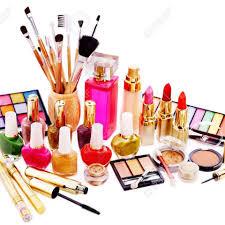Makeup & Accessories Market Developments: The Rising Demand for Men’s Grooming Products and Makeup Solutions

The makeup and accessories market has seen unprecedented growth and transformation over the past few years. Driven by changing consumer preferences, technological advancements, and an increased focus on sustainability, the industry is evolving rapidly. Innovations in product formulations, packaging, and digital engagement are setting the stage for a new era in beauty.
1. Rise of Clean and Sustainable Beauty Products
One of the most significant developments in the makeup and accessories market is the increasing demand for clean and sustainable products. Consumers are becoming more conscious about the ingredients in their beauty products and their impact on both health and the environment. In response, brands are shifting towards cruelty-free, vegan, and environmentally friendly alternatives.
Companies are not only reformulating products to exclude harmful chemicals but are also adopting eco-friendly packaging to reduce waste. Refillable containers, biodegradable packaging, and recycled materials are becoming common choices in the industry. This focus on sustainability resonates with younger generations, particularly Gen Z and Millennials, who prioritize eco-conscious purchasing decisions.
2. Digital Transformation and E-Commerce Growth
The growth of e-commerce has been a game-changer for the makeup and accessories market. With more consumers shopping online, brands are finding new ways to engage with customers digitally. The advent of virtual try-on technology, powered by augmented reality (AR), allows consumers to experiment with makeup products in real time, offering a personalized shopping experience without leaving their homes.
Moreover, social media platforms like Instagram, TikTok, and YouTube have become crucial marketing tools for beauty brands. Influencers and beauty bloggers have an enormous impact on product awareness, with many consumers making purchases based on recommendations and tutorials seen on these platforms. This digital shift has also led to the rise of online-only beauty brands, allowing smaller players to compete in a highly competitive market.
3. Customized and Personalized Beauty Solutions
Customization has become a major trend in the makeup industry. Consumers are seeking products tailored to their specific skin types, shades, and preferences. Several brands now offer personalized makeup products, such as foundation shades that match individual skin tones or skincare-infused makeup that addresses specific skincare needs.
This move towards personalized beauty is fueled by advancements in technology, including AI-powered algorithms that analyze skin tones and recommend the best products. With data-driven insights, brands are able to provide consumers with unique solutions that cater to their specific beauty goals, fostering a deeper connection between consumers and the products they purchase.
4. Men’s Grooming Market Expansion
While makeup and beauty products have traditionally been targeted at women, the men's grooming market is expanding rapidly. Increasing awareness and acceptance of male grooming rituals have led to a surge in makeup products designed specifically for men. From foundations to concealers and brow gels, beauty brands are now offering a variety of makeup products tailored to male consumers.
The rise of male beauty influencers and celebrities advocating for self-expression through makeup is also contributing to this shift. Makeup for men is no longer a taboo, and brands are starting to cater to this growing demand. With more options available, male consumers are becoming more confident in experimenting with makeup, blurring the lines between traditional gender norms.
5. Innovation in Makeup Tools and Accessories
Makeup accessories, such as brushes, sponges, and applicators, have undergone significant innovation in recent years. Brands are developing advanced tools that improve the application process, enhance precision, and offer a flawless finish. The demand for high-quality makeup tools has led to collaborations with professional makeup artists and beauty influencers to create high-performance brushes and sponges.
Moreover, there has been a shift towards multifunctional tools that help save time and effort in the makeup routine. For instance, multi-use brushes that can be used for different applications, such as contouring and highlighting, are becoming more popular. These tools are not only designed for better results but also to provide convenience for busy consumers who want high-quality makeup at their fingertips.
Conclusion
The makeup and accessories market is experiencing rapid growth and transformation, driven by consumer demand for clean, personalized, and digital beauty solutions. With a focus on sustainability, digital engagement, and inclusivity, the industry is becoming more diverse and innovative than ever before. As these developments continue to shape the market, beauty brands must stay ahead of the curve to meet the evolving needs of their customers.
- Art
- Causes
- Crafts
- Dance
- Drinks
- Film
- Fitness
- Food
- Games
- Gardening
- Health
- Home
- Literature
- Music
- Networking
- Other
- Party
- Religion
- Shopping
- Sports
- Theater
- Wellness


